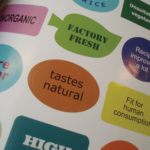
Tag Archives Gluten

New federal standard to expand beer ingredient options

Bakers, farmers struggle to make a little dough
A poor crop is wreaking havoc on bakers and creating market opportunities for high-protein wheat

Cheerios to remove ‘gluten-free’ claim

Gluten-free diet may increase risk of toxic metal exposure
A new study finds wheat substitutes can bioaccumulate things like arsenic and mercury

VIDEO: What’s in your wheat?
Cigi Analytical Services investigates gluten and more

Cigi coaxes Philippines back into the fold
Cigi is wooing Filipino millers after a period of poor gluten strength and low protein drove them to American wheat suppliers

Labelling helps consumers make healthy choices… or does it?
Sometimes labels actually cause consumers to make false assumptions about the foods they’re consuming

Country’s largest bread company says quality of Canadian wheat must improve
Gluten additives to offset the protein shortfall cost the company $1 million last year alone

New spring wheat has better FHB tolerance, but end-use quality borderline
AAFC’s BW980 will go for a fourth year of testing to see if one year of low gluten strength was characteristic or an anomaly

Prairie wheat growers wanted to assist in gluten strength study
Farmers can get some valuable data about their wheat, and potentially help boost returns for the whole class


